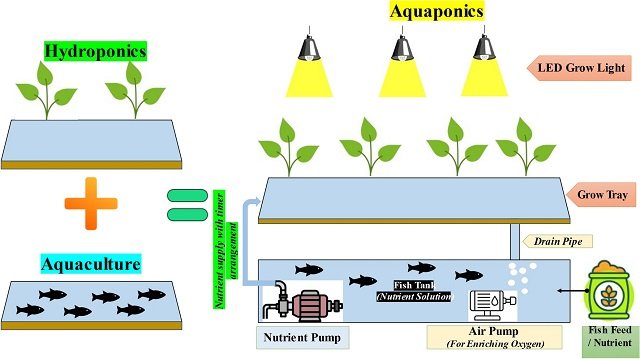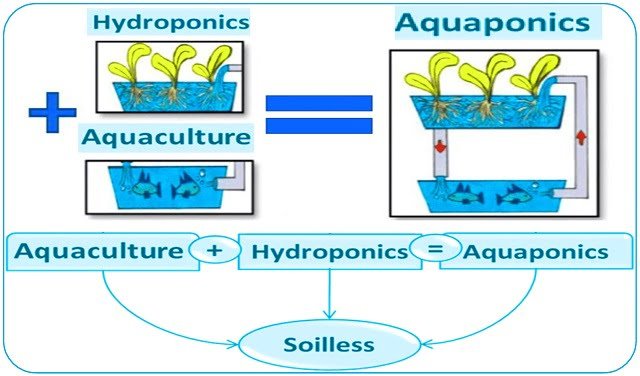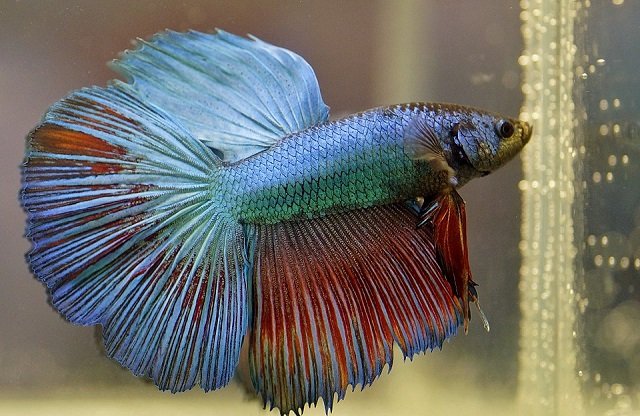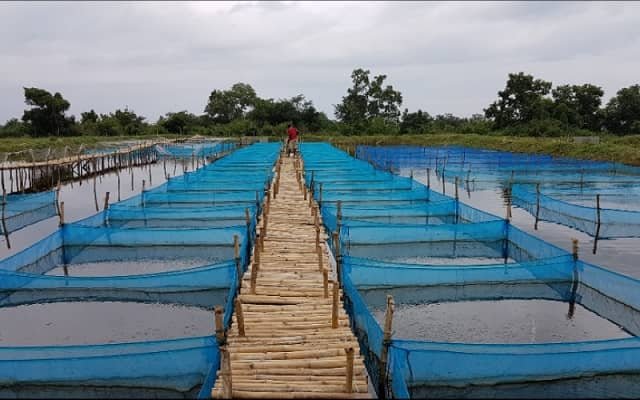
Aquaponic systems stand out for their resource efficiency and potential for localized food production, particularly in urban environments. A study published by researchers from Kampala International University and P.S.R. Engineering College explores how the integration of automation and robotics is revolutionizing hydroponic and aquaponic systems, enhancing their efficiency, sustainability, and scalability.
The transformative power of automation and robotics
The integration of automation in hydroponic and aquaponic systems amplifies their efficiency and sustainability, impacting the social and economic fabric of urban agriculture. Automation boosts productivity and resource efficiency, enabling urban farmers to increase yields with less reliance on manual labor—an essential advantage in urban areas where land and labor are scarce. It also creates new economic opportunities in precision agriculture consulting, technology maintenance, and agritech entrepreneurship.
Key technologies driving this transformation
Automated nutrient and pH management systems
The integration of technologies such as IoT, AI, and fuzzy logic has significantly advanced these systems, optimizing plant growth by controlling environmental factors like pH, temperature, and nutrient levels. For example, systems using Arduino controllers and sensors can automatically adjust pH and Total Dissolved Solids (TDS) levels, ensuring optimal conditions for plant growth.
Advanced lighting solutions
IoT-integrated technologies and automatic control algorithms enable precise, centralized lighting control in indoor farming, essential for maintaining an ideal plant growth environment while minimizing energy consumption. Manipulating the Daily Light Integral (DLI) and LED spectrum has been shown to significantly impact crop growth and nutritional quality, particularly in crops like spinach.
Robotics for planting and harvesting
Increasingly, robotic planting and harvesting systems are being developed to improve efficiency and productivity in hydroponic and aquaponic farming. In hydroponic systems, a novel gripping mechanism has been designed to harvest leafy greens like Chinese cabbage. Selective harvesting robotic systems, such as those used for strawberries, are being enhanced with technologies like 5G networks to improve processing speed and precision.
Sensors
In hydroponics, sensor fusion and IoT technologies are employed to autonomously monitor and regulate environmental conditions, improving plant yields and reducing human intervention. The use of spectroscopic sensors, such as the AS7265x, in smart indoor micro-hydroponics enables precise monitoring of nutrient concentrations, particularly nitrogen, which is crucial for plant growth. In aquaponics, sensors play a crucial role in maintaining the health of both fish and plants.
Drones
Drone integration offers significant advancements in monitoring and management, leveraging the capabilities of unmanned systems and IoT. Drones equipped with sensors can efficiently monitor environmental parameters such as water quality, temperature, and contaminants, which are crucial for managing aquaculture farms, reducing labor costs, and improving data collection accuracy.
Maintenance and cleaning robots
These robots play a crucial role in enhancing the efficiency and sustainability of hydroponic and aquaponic agricultural systems. By integrating aquaculture and hydroponics, these systems significantly benefit from automation to ensure optimal conditions for both plant and fish growth.
Stay Always Informed
Join our communities to instantly receive the most important news, reports, and analysis from the aquaculture industry.
IoT and AI
IoT– and AI-driven solutions enable real-time monitoring and predictive maintenance, further enhancing system productivity and reliability. IoT integration and predictive analytics have been shown to significantly improve aquaponics management by allowing robust remote monitoring and predictive maintenance.
Benefits and challenges of automation
Benefits of automation
Increased productivity and efficiency
Automation, including nutrient management systems, climate control, and planting/harvesting robots, has significantly improved productivity and efficiency in hydroponic and aquaponic systems. Urban farmers can increase yields and reduce labor dependency, which is particularly beneficial in densely populated urban areas where land and labor are scarce.
Optimized resource use
Automated systems minimize water, energy, and nutrient waste, addressing environmental concerns in modern agriculture. Automated irrigation systems using FDR sensors in strawberry cultivation resulted in a 1.2-fold increase in water use efficiency and a 41% reduction in fertilizer costs. Decoupled aquaponic systems save up to 62.8% of mineral fertilizers compared to conventional hydroponics, significantly reducing greenhouse gas emissions associated with fertilizer production.
Enhanced operational scalability
Monitoring drones and maintenance robots enhance operational scalability and reduce reliance on human labor.
Reduced labor and operational costs
Automation significantly reduces labor and operational costs. Automated systems have demonstrated a reduction in labor requirements, allowing precise and continuous monitoring and adjustment of growing conditions, leading to faster harvests and greater productivity compared to traditional soil-based farming.
Data-Driven decision-making
Analyzing growth data to optimize conditions improves yields. IoT integration and predictive analytics have significantly enhanced aquaponics management, enabling robust remote monitoring and predictive maintenance.
More consistent yields
Hydroponic systems have demonstrated significant potential for improving yield consistency across various crops. The integration of hybrid plasma-nanobubble technology in hydroponics resulted in a 60% increase in lettuce yield, attributed to improved nutrient solution properties and antimicrobial effects.
Real-Time monitoring and control
Automated systems enable precise management of water, nutrients, and environmental conditions, reducing resource waste and ensuring optimal plant growth. IoT- and AI-powered solutions allow real-time monitoring and predictive maintenance, further enhancing productivity and system reliability.
Challenges of automation
High initial costs
High initial costs, maintenance complexities, and scalability issues hinder widespread adoption. The expenses associated with automation technologies could pose financial challenges for small urban farmers, potentially leading to a market landscape that favors larger enterprises.
Technical complexity and expertise requirements
Managing environmental conditions precisely requires technical knowledge and expertise. The necessary technical expertise to effectively manage these systems can be a barrier, as they require in-depth knowledge of both aquaculture and hydroponics.
Energy demands
The high energy requirements of Controlled Environment Agriculture (CEA) systems present significant sustainability challenges, requiring innovations in energy management and integration of renewable energy sources.
Cybersecurity risks and system failures
While IoT and AI integration improves efficiency, it also introduces risks such as cybersecurity threats, high costs, and potential system failures.
Workforce displacement
The decline of conventional agricultural jobs underscores the need for reskilling initiatives and digital literacy.
Nutrient management
Balancing nutrients to meet the needs of both plants and fish requires constant monitoring and adjustments.
Waste management
Hydroponic systems generate Waste Nutrient Solutions (WNS) containing high concentrations of nitrogen and phosphorus, which can cause environmental degradation if not properly treated.
Case studies and future directions
Numerous case studies demonstrate the positive impact of automation on productivity, resource efficiency, and overall system performance in hydroponic and aquaponic systems. Future research will focus on:
- Energy Use Optimization: Deep learning and other AI techniques can be used to further refine energy management strategies.
- Enhancing the Economic Viability of Staple Crop Production: Research is needed to make CEA systems economically viable for staple crop cultivation.
- Addressing Social and Cultural Dimensions of Sustainability: Considering the impact of automation on employment and ensuring a just transition for agricultural communities is essential.
- Further Development of Closed-Loop Systems: Integrating insect larvae for nutrient recovery.
- Recycling and other innovative approaches can further enhance sustainability.
Conclusion
Automation and robotics are transforming hydroponic and aquaponic systems, paving the way for a more sustainable and efficient future in food production. By optimizing resource utilization, reducing labor dependency, and enhancing scalability, these technologies hold immense potential in addressing global food security challenges.
While challenges persist, continuous innovation and a focus on sustainable practices will unlock the full potential of automated hydroponics and aquaponics, contributing to a more resilient and environmentally responsible food system.
Contact
Milon Selvam Dennison
Department of Mechanical Engineering, School of Engineering and Applied Sciences, Kampala International University
Western Campus, Ishaka-Bushenyi, Uganda
Email: milonds.mf@gmail.com
Reference (open access)
Dennison, M.S., Kumar, P.S., Wamyil, F. et al. The role of automation and robotics in transforming hydroponics and aquaponics to large scale. Discov Sustain 6, 105 (2025). https://doi.org/10.1007/s43621-025-00908-4
Editor at the digital magazine AquaHoy. He holds a degree in Aquaculture Biology from the National University of Santa (UNS) and a Master’s degree in Science and Innovation Management from the Polytechnic University of Valencia, with postgraduate diplomas in Business Innovation and Innovation Management. He possesses extensive experience in the aquaculture and fisheries sector, having led the Fisheries Innovation Unit of the National Program for Innovation in Fisheries and Aquaculture (PNIPA). He has served as a senior consultant in technology watch, an innovation project formulator and advisor, and a lecturer at UNS. He is a member of the Peruvian College of Biologists and was recognized by the World Aquaculture Society (WAS) in 2016 for his contribution to aquaculture.




